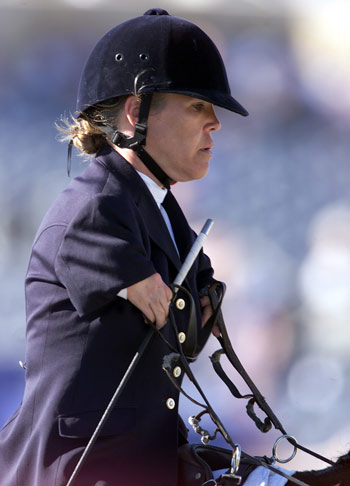PARALYMPICS /
Paralympic Sports
Equestrian
Updated: 2008-08-29 16:03

Credit:GETTY IMAGES
In official competitions, Dressage riders compete in two types of competition:
Championship Test: Competitors perform set movements as defined by the IPEC.
Freestyle Test (also known as a Kur): Riders create their own pattern of movements called a floor plan. The plan has to incorporate compulsory movements as defined by the IPEC. The test is ridden to music that the rider chooses to match and enhance the paces of the horse. The test should clearly show the unity between rider and horse as well as rhythm and harmony in all the movements and transitions.
The Equestrian competition programme also includes a Team Test. Teams consist of three or four riders from the same country. At least one of the athletes must be Grade I or II. The team's final score is based on the sum from the best three performances in the Team Test and the individual Championship Test. If a team consists of four riders, the least successful total score is excluded from the final score.
There is also an optional competition called the Pairs Freestyle to Music in which two riders compete together as a pair in a Freestyle Test.
Competitions are held in an arena measuring 40 metres x 20 metres. If possible, the competitions for Grade IV riders take place in a 60 metres x 20 metres arena. Markers in the form of a letter are placed at set locations around the arena. The test movements are defined by letter sequences, for example "HEK medium walk". This means starting at H past E to K the horse must demonstrate medium walk. Letters (D, X and G) indicate positions on the marked centre line of the arena.
Visually impaired Grade III and Grade IV riders may use alternative methods to orientate themselves within the arena. They are allowed "callers" around the arena who call out a letter to the rider as they approach and pass. Many experienced riders use only one caller. The Grade III double silver medallist in Sydney, Anne Cecilie Orr from Norway, is totally blind and rode to a whistle in her music test. In 2003, she developed a sound system that can be quickly erected round the arena for a blind person's test.'
(Credit: IPC. Click here for further information.)